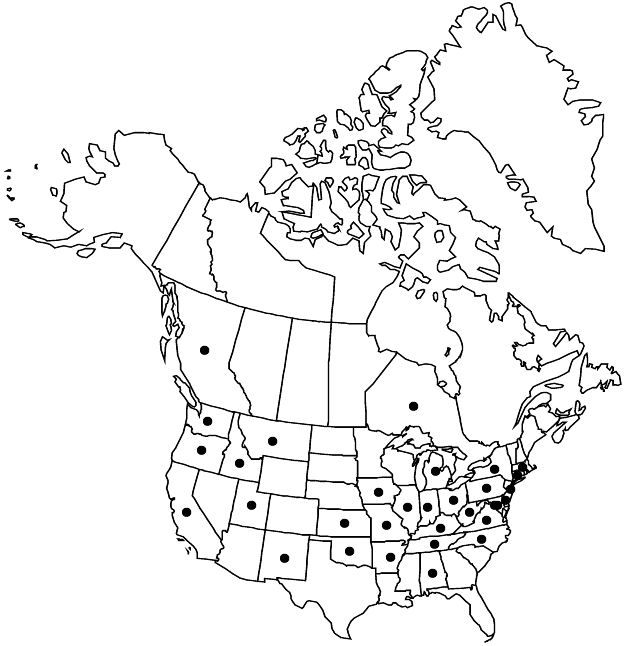Prunus mahaleb
Sp. Pl. 1: 474. 1753.
Shrubs or trees, not suckering, 30–150 dm, not thorny. Twigs with terminal end buds, densely puberulent. Leaves deciduous; petiole 4–20 mm, glabrous or ± puberulent on adaxial surface, sometimes glandular distally, glands 1–2, discoid; blade broadly ovate, oblong, or suborbiculate, 1.9–4.5 × 1.2–3.4 cm, base usually rounded to truncate, sometimes subcordate, margins crenate, teeth blunt, glandular, apex abruptly acuminate, apicula obtuse, surfaces usually glabrous, sometimes midribs and veins hairy abaxially. Inflorescences 4–10-flowered, corymbs; central axes 8–40 mm. Pedicels 6–18 mm (subtended by leafy bracts), glabrous. Flowers blooming at leaf emergence; hypanthium conic-campanulate, 2–3 mm, glabrous externally; sepals reflexed, oblong, 1.3–2 mm, margins entire, surfaces glabrous; petals white, elliptic to obovate, 6–7 mm; ovaries glabrous. Drupes dark red to black, ovoid, 6–10 mm, glabrous; mesocarps leathery; stones ellipsoid to subglobose, ± flattened. 2n = 16.
Phenology: Flowering Apr–May; fruiting Jun–Jul.
Habitat: Roadsides, stream banks, limestone bluffs and quarries, lowland thickets and woods, fencerows, chaparral
Elevation: 0–2300 m
Distribution

B.C., Ont., Ala., Ark., Calif., Conn., Del., D.C., Idaho, Ill., Ind., Iowa, Kans., Ky., Md., Mass., Mich., Mo., Mont., N.J., N.Mex., N.Y., N.C., Ohio, Okla., Oreg., Pa., Tenn., Utah, Va., Wash., W.Va., Eurasia.
Discussion
Prunus mahaleb was introduced to North America as a rootstock for commercial cherries and is now sometimes cultivated for its attractive and fragrant flowers. At one time, the aromatic wood was a favorite for tobacco pipes.
Selected References
None.